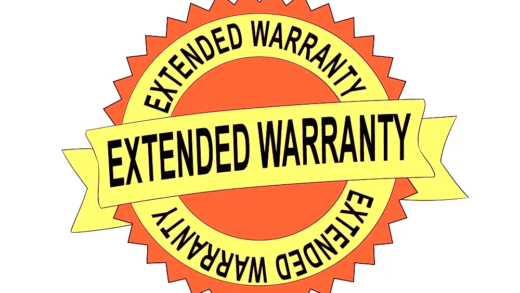This article provides a comprehensive guide for buying a car, covering essential steps like determining your budget, exploring financing options, and understanding the pros and cons of new vs. used cars. It also highlights how to avoid scams, the necessary paperwork, and tips for negotiating the best price. Finally, it emphasizes the importance of accounting for additional costs beyond the purchase price.
First Steps to Buy a Car: Getting Started
Buying a car can seem daunting, but taking the right first steps simplifies the process. Start by researching your options. Understand what type of car fits your needs—compact, SUV, or truck. Consider your lifestyle, driving habits, and preferences. The first step in buying a car is to gather information.
Next, establish your budget. This involves assessing how much you can afford without straining your finances. Don’t forget to factor in insurance, maintenance, and fuel costs. It’s crucial to be realistic about your financial limits. Many people fall into the trap of overspending, thinking they can manage the extra costs later.
Once you have a clear understanding of what you need and your budget, it’s time to explore different cars. Visit dealerships, check online platforms, and read reviews. Create a shortlist of potential cars based on your research. This way, you streamline your search and make informed decisions.
Determining Your Car Budget: What Can You Afford?
Determining your car budget is essential for a successful purchase. Start by calculating your total monthly income and subtracting your essential expenses. This gives you a clearer picture of how much you can allocate towards car payments. Experts recommend that your car payment should not exceed 15% of your monthly income.
Next, consider additional costs beyond the purchase price. These include:
- Insurance premiums
- Fuel costs
- Regular maintenance
- Registration and taxes
- Emergency repairs
It’s wise to set aside a portion of your budget for these expenses. Use online calculators to estimate monthly payments based on different loan amounts and interest rates. This helps you stay within your financial limits and avoid future stress.
Exploring Car Financing Options: Loans and Leases Explained
Understanding car financing options is crucial for making a smart purchase. You typically have two main choices: loans and leases. With a car loan, you borrow money to buy the car outright. Once paid off, the car is yours, giving you the freedom to keep it as long as you want.
Leasing, on the other hand, is more like renting. You pay for the car’s depreciation over the lease term, which is usually shorter than a loan term. At the end of the lease, you return the car. Leasing often comes with lower monthly payments but has mileage limits and no ownership at the end.
When choosing between these options, consider your driving habits and financial goals. If you drive a lot, a loan might be better for you. If you prefer driving a new car every few years, leasing could be the way to go. Always read the fine print and understand the terms before making a decision.
New Car vs Used Car: Which is Right for You?
When it comes to buying a car, the choice between a new car and a used car is significant. Buying a new car often means enjoying the latest features, warranties, and peace of mind regarding reliability. However, it also comes with a higher price tag and faster depreciation.
On the flip side, used cars can offer substantial savings and lower insurance costs. Yet, they may come with hidden issues or less modern technology. Before making a decision, consider these factors:
- Budget: New cars are pricier, while used cars can fit tighter budgets.
- Depreciation: New cars lose value quickly; used cars have already depreciated.
- Warranty: New cars usually come with warranties, used cars may not.
- Features: New cars have the latest technology and safety features.
Ultimately, the right choice depends on your financial situation and personal preferences. If you value reliability and new technology, a new car might be for you. If you’re budget-conscious and willing to do some homework, a used car could be a smart move.
Pros and Cons of Used Cars: What to Consider
Used cars can be a fantastic option for many buyers, but it’s essential to weigh the pros and cons carefully. One of the significant benefits is cost savings. Used cars typically have a lower purchase price compared to new ones, making them more accessible for budget-conscious buyers.
However, there are risks involved. Used cars might come with a history of issues or hidden repairs. Here are some pros and cons to consider:
- Pros:
- Lower initial cost
- Slower depreciation
- Wider variety of models
- Lower insurance rates
- Cons:
- Potential hidden problems
- No warranty or limited coverage
- Outdated technology
- Higher maintenance costs
Weighing these factors will help you make an informed choice. Research the car’s history, request a vehicle report, and consider a mechanic’s inspection before purchasing.
Checking Used Car Condition: What to Look For
Inspecting a used car before buying is crucial to ensure you’re making a sound investment. Start with the exterior—look for scratches, dents, and signs of rust. A well-maintained car typically has a clean exterior. Then, check the tires for even wear, which indicates proper alignment.
Moving inside, examine the upholstery for stains or tears. Test all electronics—windows, lights, and infotainment systems. Don’t forget to take a test drive. Pay attention to how the car handles and listen for unusual noises. Here’s a checklist to guide your inspection:
- Engine condition: Check for leaks or unusual sounds.
- Brakes: Ensure they respond well without grinding noises.
- Fluid levels: Check oil, coolant, and transmission fluid.
- Odometer: Verify mileage against service history.
By thoroughly checking the used car’s condition, you can avoid future headaches and make a more informed purchase. Remember, a little diligence now can save you a lot later!
Avoiding Car Dealer Scams: Protecting Yourself
Buying a car can expose you to various scams, especially from unscrupulous dealers. To protect yourself, it’s essential to learn how to identify and avoid these common scams. Start by doing thorough research on the dealership. Check online reviews and ratings to gauge their reputation. If a dealer has numerous complaints about unethical practices, it’s a red flag.
Another common scam involves bait-and-switch tactics. This is when a dealer advertises a car at a low price, but when you arrive, they claim it’s no longer available and try to sell you a more expensive model. Always verify that the vehicle you are interested in is actually in stock and priced as advertised.
Additionally, be cautious of overly complicated financing offers. Some dealers may present financing options that seem too good to be true. Read the fine print carefully and ensure you understand the terms before signing anything. Lastly, trust your instincts. If something feels off or if the dealer is pressuring you to make a decision quickly, it’s better to walk away.
Essential Paperwork for Buying a Car: What You’ll Need
Having the right paperwork is crucial when buying a car to ensure a smooth transaction. Start with your driver’s license and proof of insurance, as dealers will require these before finalizing any sale. Next, prepare your financial documents, including proof of income and a credit report if you plan to finance the purchase. These documents help establish your eligibility for loans or financing options.
You’ll also need to gather any trade-in documents if you plan to trade in your old vehicle. This typically includes the title and registration of your current car. Additionally, make sure to have a bill of sale prepared, which acts as a receipt and outlines the terms of the sale. Finally, check the dealership’s requirements for any specific paperwork they may need, such as a loan application or vehicle history report.
Negotiating Car Price: Tips for Getting the Best Deal
Negotiating the price of a car is an essential skill that can save you money. Start by doing your homework. Research the fair market value of the car you’re interested in using resources like Kelley Blue Book or Edmunds. Knowing the average price helps you establish a reasonable offer and can strengthen your negotiating position.
When negotiating, be polite but firm. Start with a lower offer than what you are willing to pay, allowing room for negotiation. Don’t be afraid to walk away if the dealer isn’t willing to meet your price; this can sometimes prompt them to reconsider. Remember to also discuss additional factors, such as warranties and service packages, which can add value to your deal.
Lastly, be aware of seasonal promotions and incentives that dealers may offer. Timing your purchase during these sales can lead to significant savings. Always negotiate with confidence and don’t rush the process; take your time to ensure you get the best possible deal.
Additional Costs When Buying a Car: Budgeting Beyond the Price Tag
When buying a car, it’s crucial to consider additional costs beyond the initial purchase price. These hidden expenses can significantly impact your budget. First, consider insurance premiums, which vary based on the car model and your driving history. It’s wise to get insurance quotes before finalizing your purchase to understand how it fits into your budget.
Next, factor in registration and taxes, which can add a considerable amount to your overall cost. Don’t forget about routine maintenance, which is essential to keep your vehicle in good condition. This includes oil changes, tire rotations, and other regular services that can add up over time.
Finally, set aside funds for potential repairs, especially if you’re buying a used car. Unexpected repairs can arise, and having a financial cushion will help you manage these costs without stress. By budgeting for these additional expenses, you can make a more informed decision and avoid financial strain after your purchase.





Comments are closed.